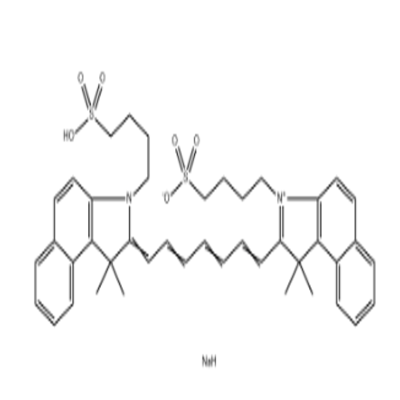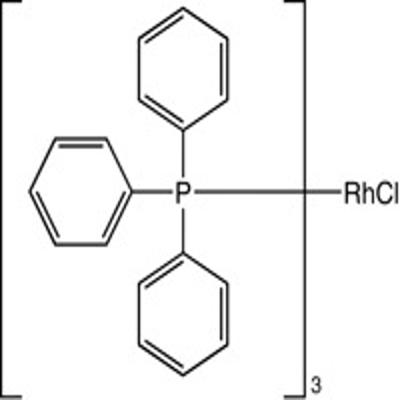-
Categories
-
Pharmaceutical Intermediates
-
Active Pharmaceutical Ingredients
-
Food Additives
- Industrial Coatings
- Agrochemicals
- Dyes and Pigments
- Surfactant
- Flavors and Fragrances
- Chemical Reagents
- Catalyst and Auxiliary
- Natural Products
- Inorganic Chemistry
-
Organic Chemistry
-
Biochemical Engineering
- Analytical Chemistry
- Cosmetic Ingredient
-
Pharmaceutical Intermediates
Promotion
ECHEMI Mall
Wholesale
Weekly Price
Exhibition
News
-
Trade Service
Over the past few months, scientists have developed treatments for COVID-19, from stem cells and synthetic antibodies to common over-the-counter drugs and tried-and-tested steroids.
even tried to lure SARS-CoV-2 coronavirus away from human cells by using molecular bait.
few people try to distract the new coronavirus with fake human cells.
now, in a new study, researchers at Fudan University, Wuhan University, Jinan University and the National Institutes of Health (NIH) in China report that genetically modified cells can be in vitro and the coronavirus.
they assume that such cell baits may be used to fight infection.
study was recently published in the journal PNAS under the title "Decoy nanoparticles protect against COVID-19 by concurrently adsorbing viruses and cytokines."
by Lu Lu, Youhua Xie, Shibo Jiang and Xiaoyuan Chen of the National Institutes of Health at Fudan University.
using nanocoals against COVID-19, pictured is PNAS, 2020, doi:10.1073/pnas.2014352117.
is a very elegant study," said Bengt Fadeel, a molecular toxicologist at the Karolinska Institute in Sweden, who was not involved in the study.
as long as you know the subject of a particular virus, in principle, you can use this method to intercept any virus.
when the SARS-CoV-2 virus began spreading around the world earlier this year, Chen switched from developing nanotechnology to diagnosing and treating cancer to studying SARS-CoV-2," he said.
he has seen reports of the use of baited subjects to trick pathogens such as HIV, and wondered if the emerging technology could work for SARS-CoV-2.
To find out, the researchers fused membranes from the human monocyte THP-1, a cell line from leukemia, with membranes from human embryonic kidney cells that overexply express ACE2 receptors, where SARS-CoV-2 seizes the receptor to invade the cells.
Chen says they hope that if these fusion follicles are injected into the body, the virus will ignore ungenerate human cells and target cell bait, or genetically modified cells.
, according to Chen, once attached to ACE2 in genetically modified cells, the virus is absorbed and mediated.
By embedding monocycell membranes with cytokine receptors into these engineering bubbles, these cell baits can bind to inflammatory cytokines such as IL-6 to prevent them from accumulating and causing cytokine storms, which are thought to lead to a more severe over-immune response to COVID-19.
not new to the idea of using bait to thwart SARS-CoV-2 infections.
team of scientists created a bait that binds particularly well to the virus using genetically modified, free-floating ACE2 subjects.
the bait, which can "significantly block the early stages of SARS-CoV-2 infection," is now in phase 2 clinical trials conducted by Apeiron Biologics.
in a preprinted article published in July, Gagav Sahay, a pharmacologist at Oregon State University, described a method of using lipid nanoparticles to deliver engineered mRNAs encoding ACE2 to the livers of mice so that ACE2 baits could be expressed and secreted into the bloodstream.
he found that this method successfully increased ACE2 baits in the body, and that they inhibited a genetically modified, non-pathogenic SARS-CoV-2 in vitro.
Chen's new extension of the concept is to couple baits with cytokine complexes.
Sahay said, "The combination of ACE2 and cytokine-like bodies in this vesicle structure is a new thing.
this is a very exciting new development.
" the researchers tested their nanocoals (nanodecoy, the cell baits mentioned earlier) by cultured SARS-CoV (which led to the SARS outbreak in 2003) and SARS-CoV-2 (which led to COVID-19) in human and monkey cells, and found that these nanobaits significantly inhibited viral infections regardless of cell or virus type.
to test whether the baits worked outside of petri dishes, the researchers asked mice to inhale stimulant lipid polysaccharides, which induced acute lung inflammation in mice.
four hours later, the mice inhaled the nano-baits, and eight hours later, they collected fluid from their lungs.
found that the baits succeeded in removing cytokines from the mice that received them, compared to mice that did not receive them.
s quite straightforward," Chen said.
is surprising that such an easy method can at least att the cellular level to normal the virus, and in the body within a few hours to the cytokines.
is essential for COVID-19, and these nanocody can do just that.
"Although these results suggest that these baits can mesmerge cytokines in the lungs of mice, their ability to block SARS-CoV-2 infections was not tested in mice."
chen pointed out that there is currently a lack of genetically modified mice carrying the human ACE2 gene, which will be necessary for such experiments.
Fadeel said it was encouraging that mice receiving the nanocoal did not have any adverse reactions to the treatment, but said he wondered if this would work in humans, especially since the genetically modified cells used materials from human cancer cells.
, "I would be wary of a small amount of cancer cells, especially into the lungs."
" Sahay also points out that cell membranes in the lungs, arteries, heart, kidneys and intestines produce ACE2 for a reason--- it cuts angiotensin, a protein that raises blood pressure.
he doubts the baits will impair the body's ability to regulate blood pressure because angiotensin may bind to them.
researchers have no plans to test the baits in humans.
," Chen said, "It's a very simple --- it's almost too simple."
that's the beauty of this study.
" Reference: 1. Lang Rao et al. Decoy nanoparticles protect against COVID-19 by concurrently adsorbing viruses and appery cytokines. PNAS, 2020, doi:10.1073/pnas.2014352117.2.Vanessa Monteil et al. Inhibition of SARS-CoV-2 infects in engineered human tissues using clinical-grade soluble human ACE2. Cell, 2020, doi:10.1016/j.cell.2020.04.004.Jeonghwan Kim et al. Rapid generation of the exchange and mucosal decoy ACE2 using mRNA nanotherapeutics for the potential treatment of SARS-CoV-2. bioRxiv, 2020, doi:10.1101/2020.07.24.205583.4.Decoy Cells SARS TRICK-CoV-2, Reduce Cytokines In Vitro This article was originally sourced from Bio Valley, for more information please download Bio Valley APP (







